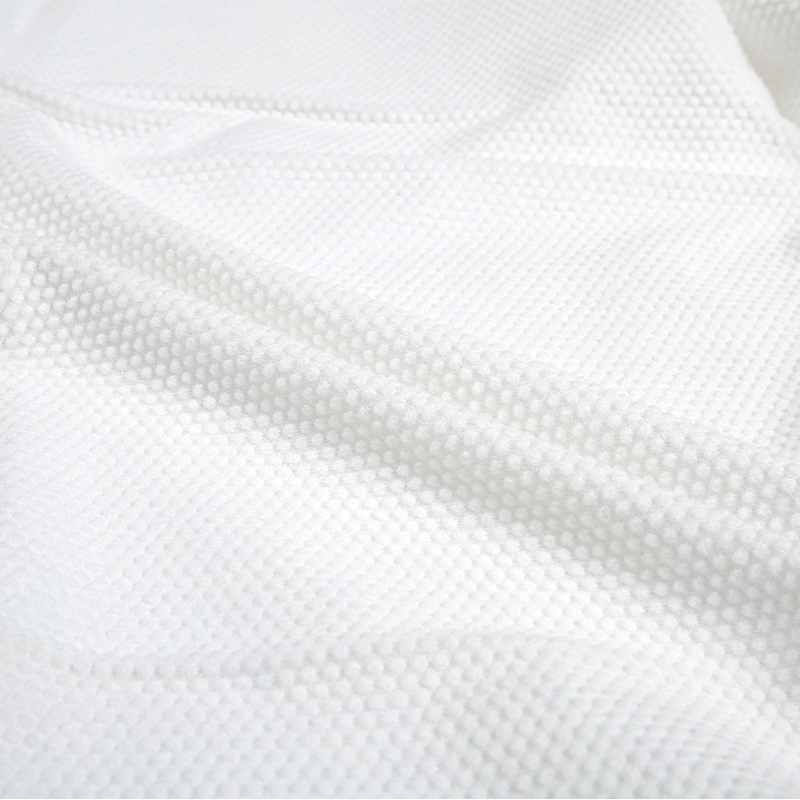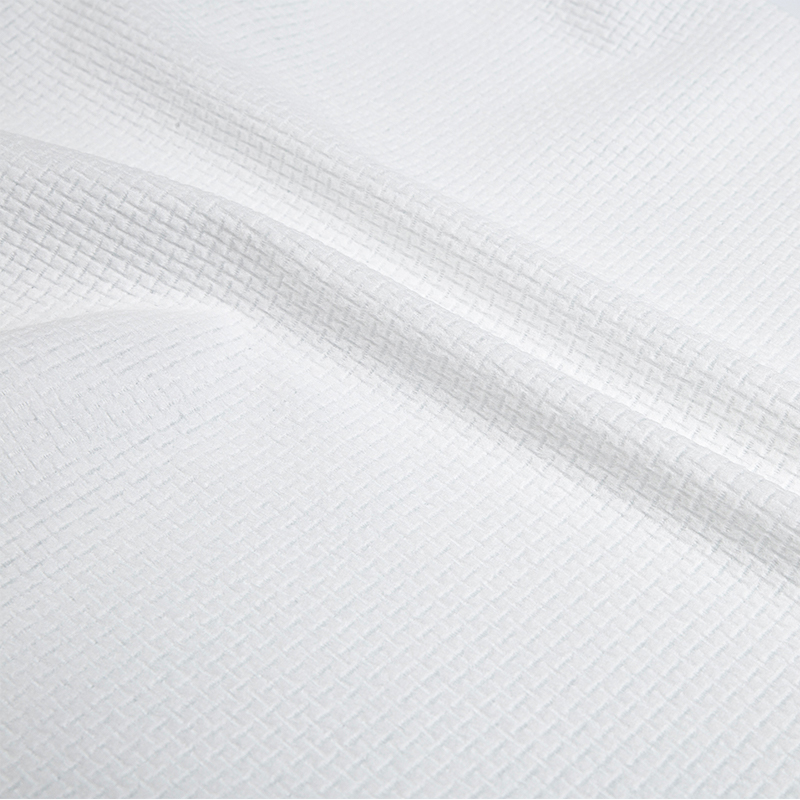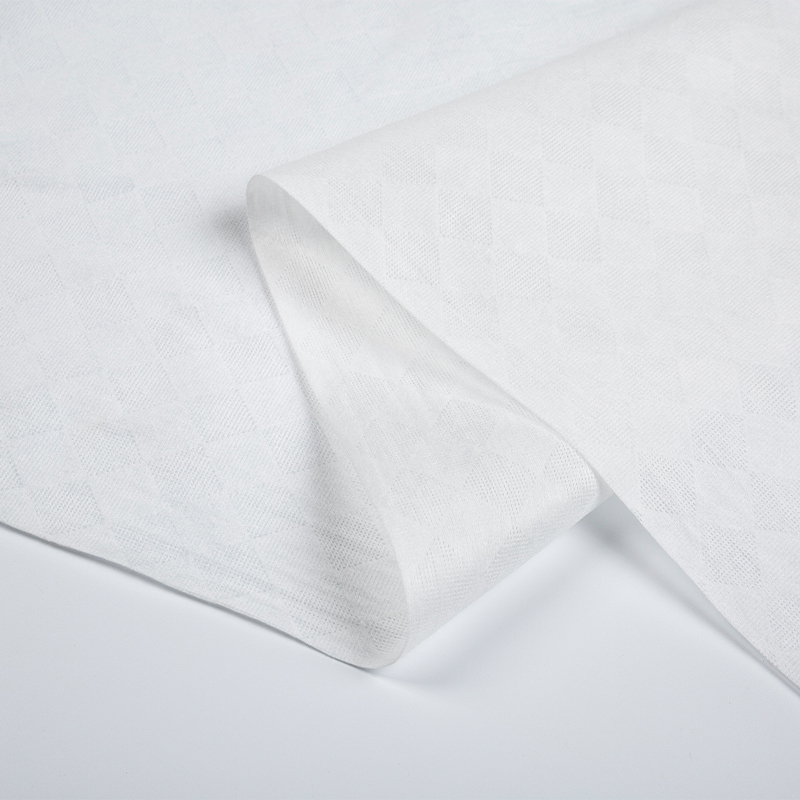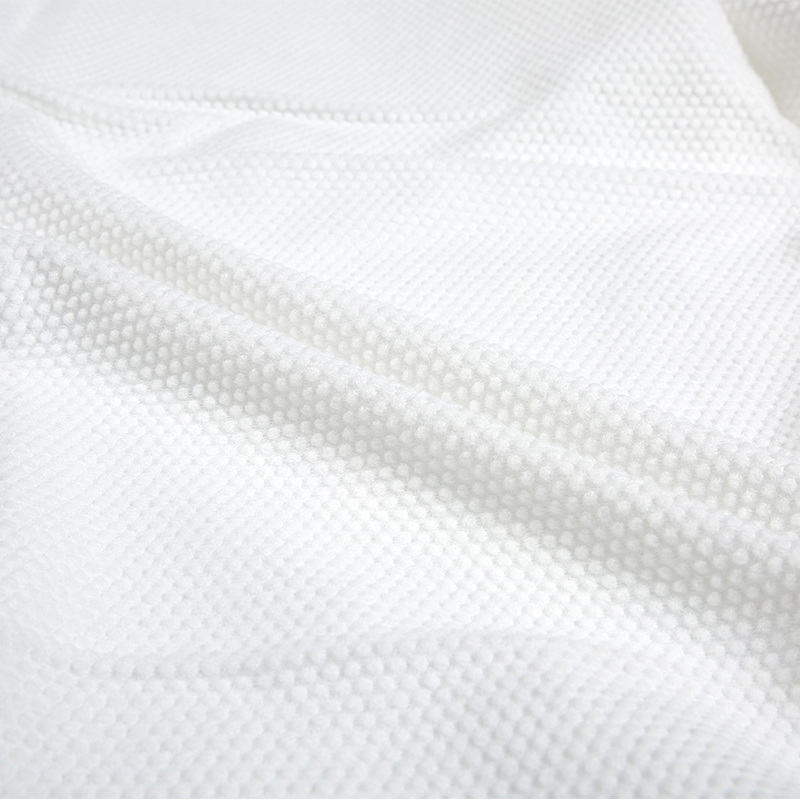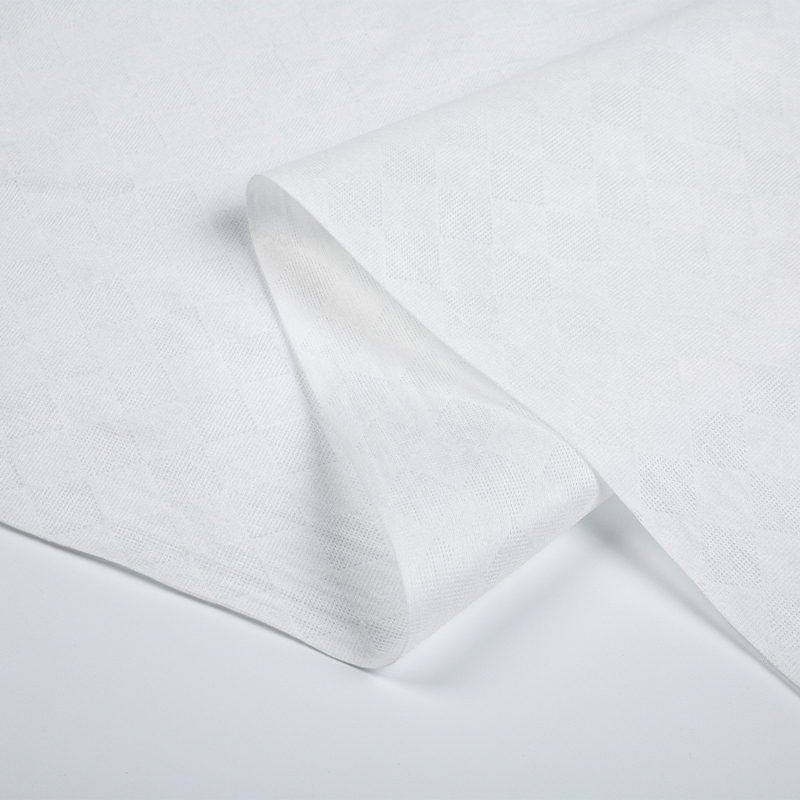Founded in 2022, Hangzhou Shunlong Nonwovens Technology Co., Ltd. is a professional China nonwoven fabric manufacturer and non-woven raw material factory
Wet Wipe Nonwoven Fabric exhibits excellent performance in water absorption, which is mainly due to its unique fiber structure and production process.
1. The influence of fiber structure on water absorption
Wet Wipe Nonwoven Fabric is usually made of a variety of fiber raw materials, including natural fibers (such as cotton, wood pulp, etc.) and synthetic fibers (such as polyester fibers, polypropylene fibers, etc.). After special treatment, these fibers form a porous, fluffy mesh structure. This structure provides a lot of storage space for water, allowing nonwoven fabrics to quickly absorb and retain a lot of water.
Advantages of natural fibers: Natural fibers, especially cotton fibers, have good hydrophilicity and hygroscopicity. There are a lot of gaps and micro-channels inside cotton fibers, and these structures provide channels for rapid penetration of water. When water comes into contact with cotton fibers, it will be quickly absorbed by the fibers and diffuse into the fibers along the micro-channels, thereby achieving the effect of rapid water absorption.
Improvement of synthetic fibers: Although synthetic fibers may not be as good as natural fibers in terms of hygroscopicity, modern production processes have significantly improved the water absorption of synthetic fibers by improving the fiber surface structure or adding hydrophilic agents. For example, after special treatment, some polyester fibers can simulate the hygroscopic properties of natural fibers, so that non-woven fabrics have good water absorption while maintaining strength.
2. Improvement of water absorption by production process
Spunlace process: Spunlace is a commonly used process in non-woven fabric production. It uses high-pressure fine water jets to spray onto the fiber net to entangle the fibers with each other to form a non-woven fabric with certain strength and softness. This process not only enhances the strength of the non-woven fabric, but also improves its water absorption. Because during the spunlace process, the water flow will penetrate into the fiber, forming more fine channels and gaps, which is conducive to the rapid penetration and absorption of water.
Other production processes: In addition to the spunlace method, production processes such as thermal bonding and chemical bonding also improve the water absorption of non-woven fabrics to a certain extent. For example, the thermal bonding method melts the fibers by heating and bonds them to each other to form a dense mesh structure; while the chemical bonding method bonds the fibers together through chemical adhesives to form a stable structure. These processes all help to improve the water absorption of non-woven fabrics.
3. Performance in practical applications
Wet Wipe Nonwoven Fabric is widely used in personal care products such as wet wipes, and its excellent water absorption is fully demonstrated. For example, in baby wet wipes, nonwoven fabrics can quickly absorb and retain the right amount of water, providing gentle cleansing and moisturizing effects for the baby's delicate skin; in adult wet wipes, nonwoven fabrics can quickly absorb and remove dirt and sweat on the skin surface, keeping the skin dry and comfortable.
In summary, Wet Wipe Nonwoven Fabric has excellent performance in water absorption with its unique fiber structure and production process. This performance not only makes nonwoven fabrics widely used in personal care products such as wet wipes, but also provides the possibility for its application in other fields.


 English
English 日本語
日本語 русский
русский Español
Español